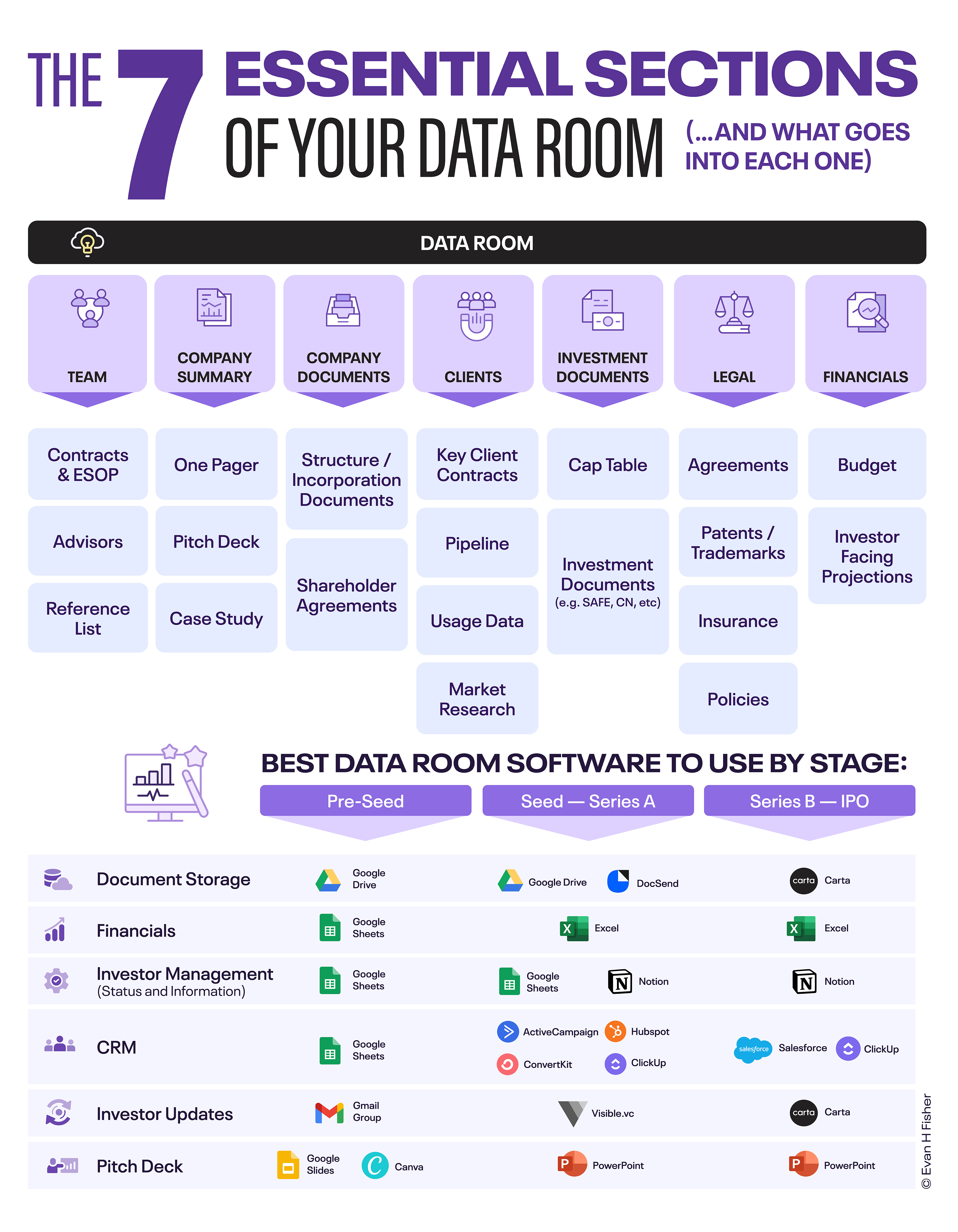I once watched a founder lose a $3M term sheet because he couldn't find his cap table.
True story.
The investor asked a basic question.
Founder fumbles for 20 minutes in his overloaded, unorganized file system.
Deal dead.
By the time investors ask for your data room, you're most of the way there - but it can, and DOES, go wrong in DD.
Unfortunately, most founders treat due diligence like a pop quiz they can cram for the night before.
They nail the pitch, impress the investors, get the term sheet... and then crash in due diligence.
Why Most Founders Bomb Due Diligence
The real reasons deals die in DD aren’t complicated:
- You scramble to organize docs after getting a term sheet
- Your financials tell three different stories across three different spreadsheets
- You can't explain the math behind your projections
- There are gaps in your contracts or IP that you hoped no one would notice
- You get defensive when investors find problems instead of addressing them head-on
Sound familiar?
You're not alone. But here's the good news.
You can fix this before you ever pitch your first investor. I'm going to show you exactly how in three straightforward steps.
Let's get into it.
Step 1: Build Your Data Room Before Anyone Asks

Most founders wait until they have a term sheet to organize their docs.
This is backwards.
Create your data room today. Not next week. Not after your next investor meeting. Today.
Here's what goes in it:
- Deck
- Financial statements (last 3 years, every quarter)
- Cap table with every share issuance documented (showing fully-diluted ownership too!)
- All key contracts (customers, vendors, key management / employees)
- IP documentation (patents, trademarks, assignments)
- Board minutes and resolutions
- Tax returns
- Insurance policies
- Video walkthrough of “the important stuff”
.png)
Put everything in a clean folder structure. Use a platform like Dropbox or Google Drive with organized subfolders.
When an investor asks for due diligence, you send one link. Done in 30 seconds.
Step 2: Know Your Numbers Like Your Phone Number
.png)
An investor will ask about your CAC. You pull up a spreadsheet and start calculating.
You just lost credibility.
You should be able to rattle off your key metrics in your sleep:
- Monthly recurring revenue
- Customer acquisition cost
- Lifetime value
- Churn rate
- Gross margin
- Burn rate
- Runway
But here's what separates amateurs from pros: knowing the assumptions behind those numbers.
Why is your LTV $12K and not $8K? What happens if churn increases by 2%? How did you calculate your TAM?
Practice explaining every number out loud. Record yourself.
If you can't defend it in 30 seconds, you don't know it well enough.
Step 3: Kill Your Own Deal First
.png)
Here's a radical idea: Find your red flags before investors do.
Missing contracts? Document it and explain how you're fixing it.
Revenue recognition issues? Call them out and show your correction plan.
Legal problems? When in doubt, disclose. But even if you’re totally clean, then write that on a simple word doc:
XYZ company has no past, present, or threatened litigation.
Transparency doesn't kill deals. Surprises kill deals.
I've seen founders raise millions with known problems in their business. Why?
Because they addressed issues proactively instead of hiding them.
Create a "Known Issues" doc in your data room. List every real potential concern. Explain your mitigation plan for each one.
Investors will respect your honesty. They'll trust you more, not less.
Final thought:
You don’t need to be perfect. You need to be ready.
Build your data room now. Master your metrics. Face your problems head-on.
Do this, and when investors start digging, they'll find a business that's organized, transparent, and ready to scale.
There are 4 ways I can help you:
02. Deep-dive Digital Courses for Founders — Self-paced courses teaching you to overhaul your pitch, find investors & get funded faster.
03. 1-on-1 Capital Raise Coaching — Build your pitch. Find your best investors. Get them interested. Close your round.
04. Promote Your Business to 2K+ Weekly Readers — Want to grow your audience, subscribers, or customer base? Showcase your brand inside of my newsletter.
